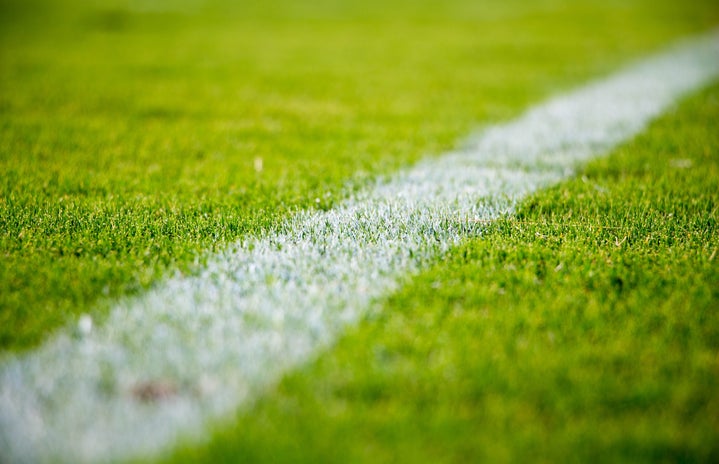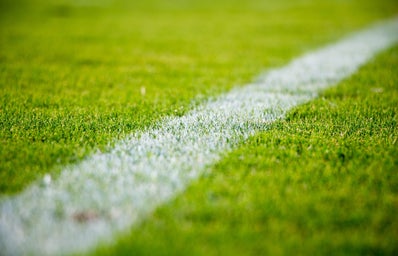A cheerleader is a mix between a dancer and a gymnast—someone in a group who shouts out chants, dances, and performs stunts to encourage sports such as basketball and football or perform at pep rallies to hype up the crowd. A sport is an activity involving skills and movement in which a single person or team competes against one another or against other teams for entertainment. Some would argue that cheer shouldn’t be considered a sport; those people should be considered wrong. In cheer, there is movement, organization, a certain skill level requirement, competition against others and much more. Everything that a cheerleader does you can find in the definition of a “sport.”
Like other sports, there are formations and spots where everyone must be. if someone were to get out of their spot the whole thing would look out of place, just like any other sport. Cheer uses sharp hitting movements to form a style of dance called pom. Cheerleading uses both gymnastics and dance in their routine “to examine what sport and dance might do when they meet in contemporary society. Several scholars implied that introducing competition—making dance sport—did compromise dance” (Markula, Pirkko). If one person were to miss a move it would throw the entire routine off. This can be compared to basketball, where they have certain plays that they go by, and if someone misses a certain move or is standing in the wrong spot, then they can potentially mess everyone else up in the process. All sports are organized, and cheer happens to be one of the most organized activities. Every single movement that a cheerleader hits needs to be strong, hard hitting, and their fists have to be facing the exact same direction or else in competition they may have points taken off for not being together or for having bad form. In football it doesn’t necessarily matter how you kick or run, it only matters that you are in your spot when you start and that you get the ball across the field as fast as you can, so long as it makes a touchdown.
Many people who don’t consider cheer a sport will judge cheer for its female participants. To them, all they see is a popularity contest, preppy dumb girls, hoes, mean girls and gender inequality. “It can be a very vigorous activity—even dangerous, when cheerleaders fall. But of course, there is a particular form of cheerleading distinguished by halter tops and pompoms and is simply titillation” (Andrew B. Johnson and Pam R. Sailors). I agree that most cheerleading squads consist of mainly women; however, that is not the case for all squads, some of which allow anyone to try out for the team. Most men just choose not to do so for their own reasons. “Cheerleaders recognize the prestige associated with sport, a function of its historic association with hegemonic masculinity, and they claim that prestige for cheerleading by highlighting its recent transformation into a more athletic, competitive activity that is no longer just for girls” (Laura Grindstaff and Emily West). Yes, cheerleaders are preppy because that’s their job. Cheerleaders have to hype the crowd up and keep the players in the game going as well as encourage the players to do better.
As for the rest of the reasons that people will criticize cheer, they are all based on stereotypes. Cheerleading is not a popularity contest. In high school everyone is labeled, and everyone fits into a certain “social class” and cheerleaders typically are considered equal with the jocks—also known as the rest of the sports people. However, this so called “social class” doesn’t actually exist outside of high school and movies. Being called dumb, a hoe, or a mean girl is also all based on movie stereotypes. Yes, sometimes the skirt runs up the ass and no one bothers to fix it, but that’s because if you touch your clothes in mid routine it looks sloppy and can get you points taken off during competition. As for the halter tops, cheer uniforms need to be form fitted because girls are getting thrown in the air and tumbling across the floor, and it is dangerous if any clothing is loose so it doesn’t get caught on anything. Also, it makes it a lot easier for girls to catch others with the skin; yes, this sometimes leaves hand marks. but that’s better than having the flyer slip through the base’s hands because of their clothes. As for cheerleaders being “dumb,” that’s just false—in order to stay on a sports team in high school you are not allowed to be failing any classes or you will be kicked off the team. This takes me to the last stereotype, cheerleaders being “mean girls” (again, mostly seen in movies). There are mean girls in the world, but just because you join a cheer squad does not mean you automatically become a mean girl.
I will also bring attention to how cheerleading is a very dangerous sport, and people can get seriously injured. But you can also get seriously injured in wrestling, like popping your arm out of place, or in football getting trampled and dog piled on by multiple people. Everything you do can be seriously dangerous, it just depends on how much practice and skill you have in the sport, and cheerleaders actually use mats to help protect against serious injuries unlike other sports.
Most sport teams go to the gym to work out or they all condition together in a weight room. Cheer may not always do this as often as other sports, but that doesn’t mean they are not strong. Cheerleaders have to have a certain skill level, the right mind set, and excellent trust in one another because they put their lives in each other’s hands (literally). Cheerleaders lift girls over their heads and throw them in the air. The flyer has to have a tight core in order to keep their balance while standing on girl’s hands, shoulders, or other girl’s thighs and not fall in the process. Cheerleading is one of the most complicated, and dangerous activities there are; cheerleaders get dropped on their heads, punched or kicked in the face and more all the time and get right back up and continue on with what they are doing. Cheerleaders have to be flexible, strong, be able to stand high in the air on top of other people without falling. In certain stunts a flyer will be thrown, and that girl basically puts her life in her teammates’ hands. She is trusting that when she comes down, no matter how she comes down, that she will not hit the mat. Gymnastics is also incorporated into cheer within the stunts or dances; “features of the sport environment, such as interpersonal relationships and positive coach behaviors, supported gymnasts through these challenges and encouraged them to overcome failure. Gymnastics participation was perceived to develop resilience, as well as life skills, self-efficacy, and self-esteem” (White, Rhiannon L., and Andrew Bennie). Cheerleaders have the same relation with their coach as gymnasts do, and also have some of the same skill with tumbling, either in the air from a stunt or on the ground.
In conclusion, cheerleading is a mix of dance and gymnastics, both of which are classified as sports. Cheerleading also has all of the requirements that come with being a real sport: an activity involving skills and movement in which a single person or team competes against one another or against other teams for entertainment. With all of this credit that can be attributed to cheer, it’s only logical that cheerleading should be considered a sport. If you ask any cheerleader, they will also say that cheerleading is a sport because they know from experience of what it takes, how much endurance you need, and how well you have to perform. Dancers and gymnasts will agree as well. Therefore, cheerleading is a sport—even though there will always be people who don’t believe so and hate down upon it, they are wrong.



